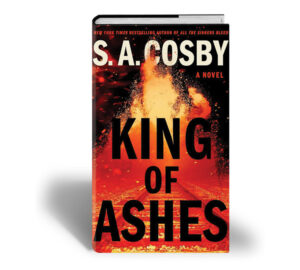The bees are flying today. Bob Sears spots their small bodies in the air as he unlocks the gate behind a large house across from Forest Park. Their hives are tucked into a corner of the yard: six white boxes that hold entire worlds. In this sanctuary, the soft smells of cedar smoke, pine needles and warm beeswax lull Sears into a reverie as he inspects bee colonies and tends to their needs. Most of the time, he’s a lawyer. But on spring afternoons, he’s a beekeeper.
As trees bud and the air warms, backyard beehives hum to life across town. There are hundreds in the St. Louis area, their keepers motivated by curiosity, business savvy or love of honey. They also know that the future of flowering plants rests on honeybee wings. Crops like almonds, apples and avocados require bees’ pollinating services, but mites, diseases and the mysterious colony collapse disorder threaten their survival and endanger the entire ecosystem. “Although bees can survive without human support, these days they probably won’t,” Sears says.
So he heads to his apiaries to do his part. Instead of a full body suit, Sears dons only a veiled hat and latex gloves from his dentist’s office. He doesn’t mind being stung, he says. “It triggers an adrenaline rush that’s actually enjoyable, a beekeeper’s high.” On each box lid, he scrawls notes about the colony’s history, hieroglyphs that tell stories of queens come and gone. Sears gently examines a honeycomb frame, its cells filled with white larvae, yellow pollen or shimmering honey. He notes which hives need protein and sugar and which queens are laying eggs well.
Sears’ house belies his passion; only a single piece of bee-adorned celadon pottery in the living room hints at how he spends his free time. But half the garage is stuffed with spare frames and white bee boxes, ready for summer, the high honey season. Rooting through his equipment, Sears speaks about bee biology with reverence. They’re social insects that work together as a ‘superorganism’—“That’s the buzz word,” Sears says. The queen bee is the heart, sustained by the nectar her children gather. The beekeeper is a facilitator, another servant to the queen.
He happened upon beekeeping while looking for a hobby at his weekend home in Franklin County. “I wanted to have an activity related to the natural environment, but I didn’t want it to take up too much of my time, which ruled out chickens and horses and livestock,” Sears says. An ad for a beekeeping workshop caught his eye in 1993. “It was a little like fraternity rush: They exaggerated how inexpensive, easy and pain-free the activity was, so we dove in.” The first season was rough. “We were doing all the right things, but our bees didn’t make it,” he says. “It’s a sickening feeling when you lose a colony.”
Now, Sears has four beeyards, two in St. Louis and two in Franklin County. They can produce 2,000 pounds of honey a year. His sticky sweet syrup has won blue ribbons at the state fair, and has been the honey of choice at the famous Chez Panisse. Sears now sells his honey at the Missouri Botanical Garden, Bowood Farms and Cafe Osage. It’s only fitting that social insect aficionados do a little socializing of their own. Sears helps run the Eastern Missouri Beekeepers Association, also known as “Bee Club,” which was founded in 1939 and provides educational
support for the area’s keepers.
Bees are not pets, yet Sears is attached to his colonies. “That’s the motivation for beekeepers: the connection with the bees and feeling part of the system of nature that bees support,” he explains. Plus, the rhythms of the growing season and the serenity of the beeyard are addictive. “One year you’re thinking about a hobby, and four years later you’re at a farmers market with honey, lip balms and lotions. You’re a beekeeper.”

[honey cake with almond topping]
Recipe from The Lewis and Clark Cookbook by Leslie Mansfield
Topping:
½ c. flour
¼ c. packed brown sugar
¼ c. sugar
3 c. cold butter, cut into small pieces
½ c. chopped almonds
Cake:
½ c. melted butter
½ c. honey
2 eggs
¼ c. sour cream
1 t. vanilla extract
½ t. almond extract
1 ½ c. flour
1 t. baking powder
½ t. baking soda
½ t. salt
>> Preheat oven to 350 F.
>> Lightly oil 8-by-8-inch baking dish.
Topping:
>> Stir flour, sugar and brown sugar until blended.
>> Cut in butter until mixture resembles coarse meal. Stir in almonds.
Cake:
>> Cream butter and honey.
>> Add eggs one at a time, beating well.
>> Stir in sour cream, vanilla extract and almond extract.
>> Sift flour, baking powder, baking soda and salt and stir into creamed mixture until smooth.
>> Pour batter into dish and spoon on topping.
>> Bake 35 to 40 minutes, or until toothpick comes out clean.
By Rebecca Koenig
Pictured: Bob Sears
Photo by Bill Barrett








